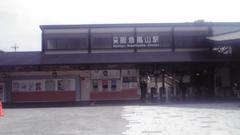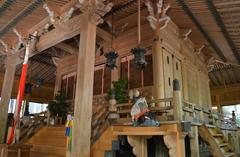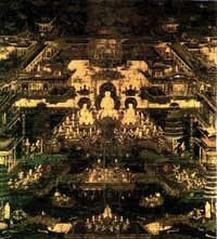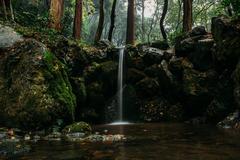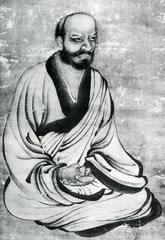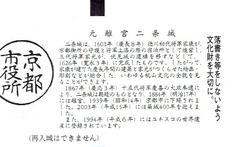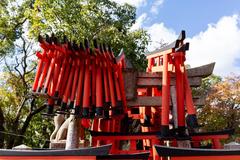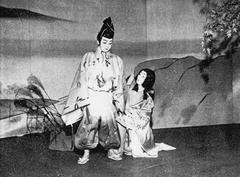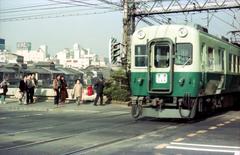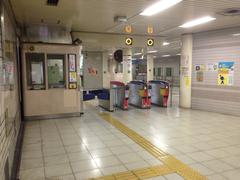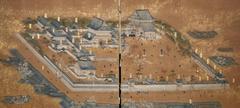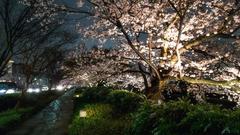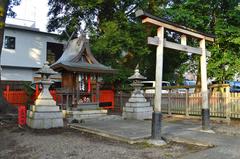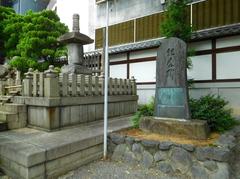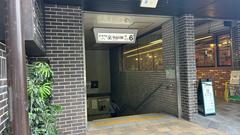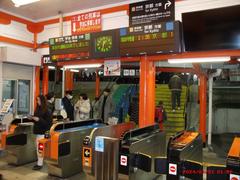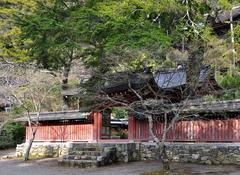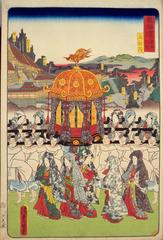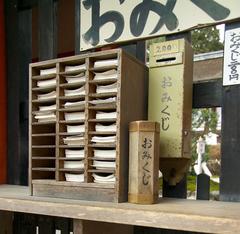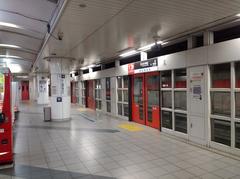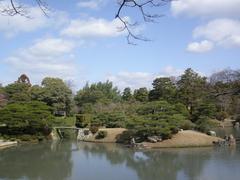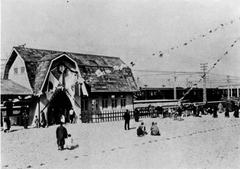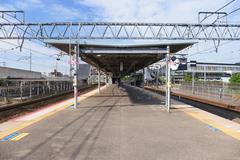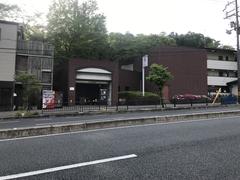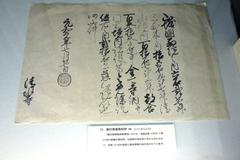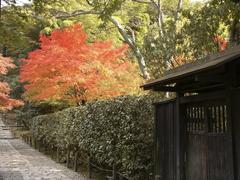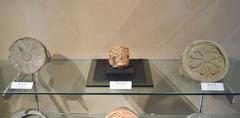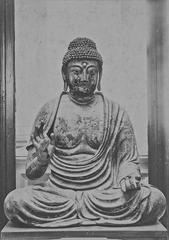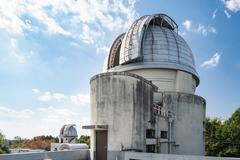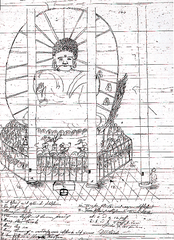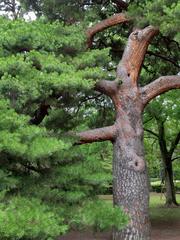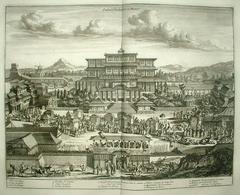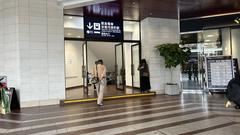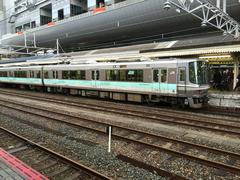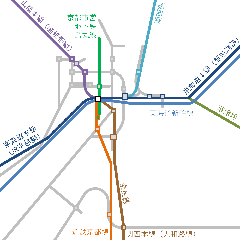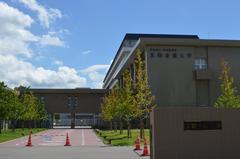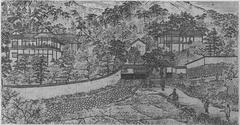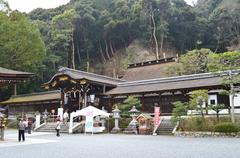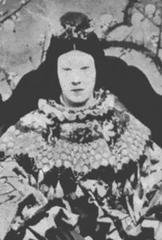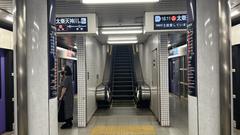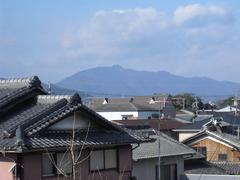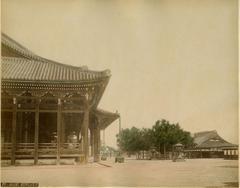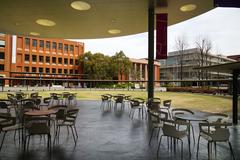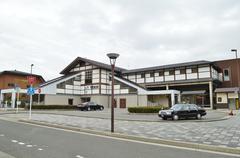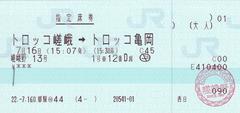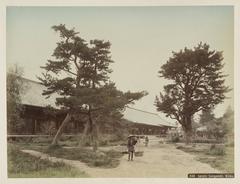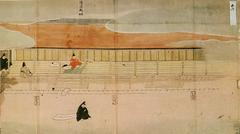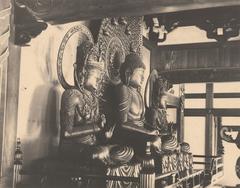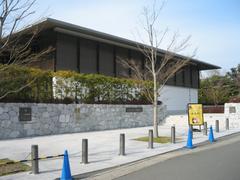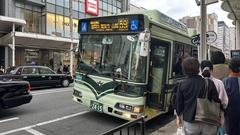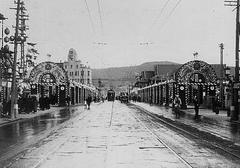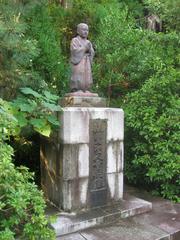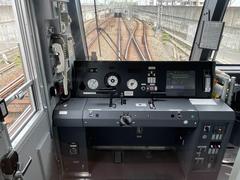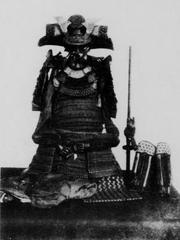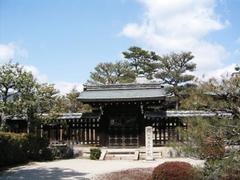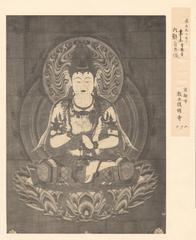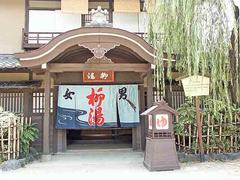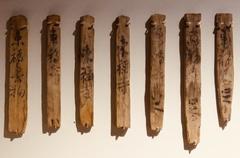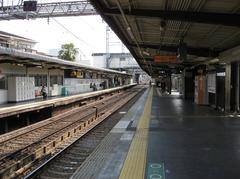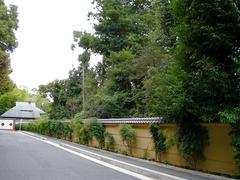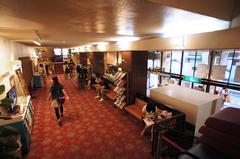
Kitano-Hakubaichō Station Kyoto: Visiting Hours, Tickets, and Travel Guide
Date: 04/07/2025
Introduction
Nestled in Kyoto’s northwestern district, Kitano-Hakubaichō Station (北野白梅町駅) is far more than a tram terminus—it’s an essential gateway to Kyoto’s historic shrines, iconic temples, and vibrant cultural events. Since its establishment in 1925 as the northern terminus of the Keifuku Electric Railroad’s Kitano Line (Randen), the station has connected generations of residents, scholars, and pilgrims to the Kitano area’s spiritual and academic heart. Its close proximity to revered landmarks like Kitano Tenmangū Shrine, Kinkaku-ji (Golden Pavilion), and Ryōan-ji Temple makes it a perfect starting point for exploring Kyoto’s unique blend of tradition and modernity (Japan Guide; Japan Insides).
Kitano-Hakubaichō Station is noted for its preserved early 20th-century wooden architecture, traditional tiled roofing, and recent upgrades such as barrier-free access and multilingual digital displays. These features create a seamless, welcoming environment for visitors from around the world. This guide covers all you need to know: visiting hours, tickets, accessibility, travel tips, nearby attractions, festival highlights, and essential amenities. Whether your visit is a short excursion or a deep dive into Kyoto’s storied northwest, Kitano-Hakubaichō Station offers a memorable entry point into the city’s enduring heritage.
Table of Contents
- Introduction
- Historical Evolution
- Visitor Information
- Station Facilities and Services
- Connectivity and Transportation
- Nearby Attractions
- Festivals and Local Culture
- Frequently Asked Questions (FAQ)
- Travel Tips and Recommendations
- Visual Resources
- References
Historical Evolution of Kitano-Hakubaichō Station
Origins and Early Development
Opened in 1925, Kitano-Hakubaichō Station became the northern anchor of the Randen Kitano Line, supporting Kyoto’s urban expansion and connecting the historic Kitano district to outlying neighborhoods. Its name reflects both the Kitano area—home to the famed Tenmangū Shrine—and the historic Hakubaichō neighborhood, renowned for its scholarly and imperial associations (Japan Guide).
Cultural Significance and Architecture
The station’s design harmonizes traditional Japanese aesthetics—wooden beams, tiled roofing—with modern conveniences. Thoughtful renovations have preserved its historic character while enhancing safety and accessibility, ensuring that locals and visitors alike can enjoy a blend of old and new.
Visitor Information
Operating Hours and Tickets
- Operating Hours: Daily from 6:00 AM to 11:30 PM (may vary during festivals and holidays)
- Ticketing: Purchase tickets at automated machines or at staffed counters. Adult fares for the Kitano Line are typically around 210–250 yen. IC cards (Suica, ICOCA, PiTaPa) are accepted for contactless payment.
Accessibility
Kitano-Hakubaichō Station is designed for universal access, featuring elevators, ramps, tactile pavement for the visually impaired, and clear multilingual signage (Flip Japan Guide). Staff assistance is available upon request.
Travel Tips
- Arrive early during major festivals (e.g., Plum Blossom Festival, Tenjin-san Market) to avoid crowds.
- Use IC cards for seamless travel across Kyoto’s transit systems.
- Combine your visit with nearby attractions to maximize your itinerary.
Station Facilities and Services
- Platforms: Two side platforms serving two tracks, facilitating easy boarding and turnaround for trams.
- Amenities: Waiting areas, accessible restrooms, baby changing facilities, and coin lockers for luggage.
- Retail: Nearby vending machines offer drinks and snacks; local cafes and shops line adjacent streets.
- Information: English-speaking staff and multilingual pamphlets are available during peak hours. Tourist information boards highlight local sites and event schedules.
Connectivity and Transportation
Randen Kitano Line
The Kitano Line runs 3.8 km from Katabiranotsuji Station to Kitano-Hakubaichō, with 10 stops en route. Notable stations include Omuro-Ninnaji (for Ninna-ji Temple) and Ryoanji/Myoshinji (for Zen temples). The line features a cherry blossom tunnel between Narutaki and Utano, especially picturesque during spring.
Bus Services
Kitano-Hakubaichō is a major bus hub, served by Kyoto City Bus and West JR Bus. Key routes connect to Kyoto Station, Kinkaku-ji, Arashiyama, and downtown Kyoto. Flat fares of 230 yen make buses an economical option (Japan Experience; Rome2Rio).
Bicycle and Taxi
A secure bike parking area is adjacent to the station, and a taxi stand is available for direct transfers—especially useful for travelers with luggage or mobility needs.
Nearby Attractions
Kitano Tenmangū Shrine
Located a short walk east, this Shinto shrine is dedicated to Sugawara no Michizane, the deity of learning. Open daily from 5:00 AM to 6:00 PM, the shrine is famous for its plum blossoms (February–March) and the bustling Tenjin-san flea market on the 25th of each month (Japan Insides). Entry is free, though some exhibitions may require a small fee.
Kinkaku-ji (Golden Pavilion)
A 20-minute walk or short bus ride north, Kinkaku-ji dazzles with its gold-leafed pavilions and reflective pond. Open from 9:00 AM to 5:00 PM, admission is about 400 yen (Discover Kyoto).
Ryōan-ji Temple
Accessible via the Randen, Ryōan-ji’s world-famous Zen rock garden is open 8:00 AM–5:00 PM, with a 500 yen entrance fee.
Hirano Shrine
Famed for cherry blossoms and spring hanami events, Hirano Shrine is open daily with free access and special illuminations in April.
Myōshin-ji Temple Complex & Ninna-ji Temple
Myōshin-ji offers a peaceful temple complex with meditation sessions, while Ninna-ji (UNESCO World Heritage) is renowned for its architecture and gardens.
Ritsumeikan University
The nearby Kinugasa Campus brings youthful energy and affordable amenities, with occasional public events and exhibitions.
Festivals and Local Culture
- Tenjin-san Flea Market (25th monthly at Kitano Tenmangū): Antiques, crafts, food stalls, and local color.
- Plum Blossom Festival (Baikasai): Late February–early March at Kitano Tenmangū, featuring outdoor tea ceremonies with geiko and maiko from Kamishichiken.
- Cherry Blossom Hanami: Early April at Hirano Shrine, with picnics, food, and evening illuminations.
- Gion Matsuri: Kyoto’s largest festival; related events are accessible from Kitano-Hakubaichō (Magical Trip).
- Aoi Matsuri: May 15th, with a Heian-era costume parade passing through the area (Woke Waves).
- University and Seasonal Events: Open lectures, art exhibitions, and cultural festivals at Ritsumeikan University.
Frequently Asked Questions (FAQ)
Q: What are Kitano-Hakubaichō Station’s operating hours?
A: Generally 6:00 AM–11:30 PM; check official schedules for details.
Q: How do I purchase tickets?
A: Use automated vending machines or staffed counters; IC cards like ICOCA and SUICA are accepted.
Q: Is the station accessible for wheelchair users?
A: Yes, with ramps, elevators, tactile paving, and accessible restrooms.
Q: What major attractions are nearby?
A: Kitano Tenmangū Shrine, Kinkaku-ji, Ryōan-ji, Hirano Shrine, Myōshin-ji, Ninna-ji, and Ritsumeikan University.
Q: Are there coin lockers for luggage?
A: Yes, for small to medium bags. For larger luggage, use Kyoto Station facilities.
Q: What is the best time to visit?
A: Early spring (plum and cherry blossoms), autumn (foliage), or during major festivals.
Travel Tips and Recommendations
- Best Seasons: Visit in spring for blossoms or autumn for foliage.
- Transit: Use IC cards for convenience; check for day passes if you plan to use the Randen frequently.
- Photography: Capture Kinkaku-ji’s golden pavilion and Kitano Tenmangū’s plum orchard.
- Local Food: Sample Kyoto sweets and ramen in the shopping arcades around the station.
- Accessibility: Most major sites and the station are barrier-free, but temple grounds may have uneven paths.
Visual Resources
References and Further Reading
- A Comprehensive Guide to Kyoto – RAH Tours
- Kitano-Hakubaichō Station Visitor Guide – PiqTour
- Keifuku Randen Tram Line – Kyoto Station Guide
- Kitano-Hakubaichō Station – Japan Experience
- Kitano Tenmangū Shrine – Japan Guide
- Tenjin-san Market – Japan Insides
- Kyoto Events and Festivals – Magical Trip
- Cultural Events at Kitano-Hakubaichō Station – Fun Japan
- Kyoto Travel Tips – Flip Japan Guide
- Rome2Rio Kitano-Hakubaichō Station
- Discover Kyoto: Keifuku Line
- Woke Waves Kyoto 2025 Festival Guide
Final Thoughts
Kitano-Hakubaichō Station is much more than a transit point—it is a portal into Kyoto’s living history and vibrant culture. With its blend of traditional design, modern amenities, and strategic connections, it welcomes visitors to experience the city’s spiritual, scholarly, and artistic treasures. Plan your visit for a seamless, enriching journey through Kyoto’s northwest.
For the latest travel updates, festival schedules, and interactive maps, download the Audiala app and follow us online.








